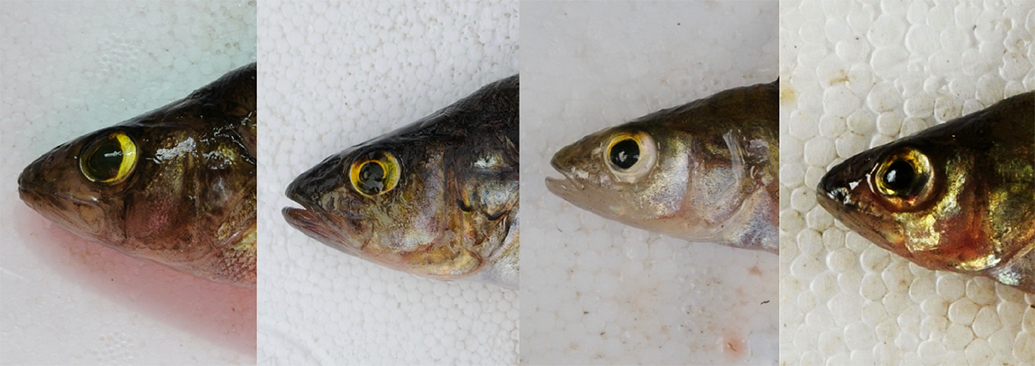Contact
Matilda Andersson
Environmental Assessment Specialist at the Department of Aquatic Sciences and Assessment; Division of Geochemistry and Hydrology
E-mail: matilda.l.andersson@slu.se

In a new study, researchers reveal how risk of predation, water clarity and fish diet affect the eye size of the European perch (Perca fluviatilis). The study was conducted on over 600 fish from 14 lakes.
There are vast differences in vision between species, but at a fundamental level it is a sense used to navigate the world, find food, and avoid being eaten by predators. In fish, variation in eye size is common within a single species and the relationship between eye size and clarity of vision should mean that fish with larger eyes are better able to identify food and predators. However, despite years of research into vision, we still do not know how eye size adapts to different conditions in natural environments.
In this study, researchers focused on understanding how factors such as water clarity, fish diet and the risk of being eaten affected eye size in freshwater fish. The focus was on the European perch, which is also one of the most common fish species in northern European lakes. The researchers measured the eye size of over 600 perch from 14 lakes. They also assessed water clarity, fish diet and the abundance of predatory fish in the lakes.
– Our results show that the eyes of the European perch were larger in lakes with fewer predators and darker waters. We have also seen that there is a correlation between large eyes and a diet with a lot of zooplankton, probably because better vision is required to find small food items, says Matilda Andersson, an environmental assessment specialist at the Swedish University of Agricultural Sciences.
In lakes with clearer water and higher predator pressure, the researchers saw that eye size decreased instead.
– This is probably because fish could maintain the same clarity of vision with smaller eyes, which are less energetically costly to maintain and are less prominent, reducing the risk of being eaten, says Matilda.

The scientists examined the variation in eye size in Eurasian perch (Perca fluviatilis), one of the most common fish species in northern European lakes. Eye size showed the strongest correlations with predation risk and visual climate in 14 lakes. Photo: Matilda Andersson.
Read the full study in the scientific publication Environmental and ecological drivers of eye size variation in a freshwater predator: A trade-off between foraging and predation risk.
Matilda Andersson
Environmental Assessment Specialist at the Department of Aquatic Sciences and Assessment; Division of Geochemistry and Hydrology
E-mail: matilda.l.andersson@slu.se
Matilda L. Andersson, Kristin Scharnweber, Peter Eklöv (2024). Environmental and ecological drivers of eye size variation in a freshwater predator: A trade-off between foraging and predation risk